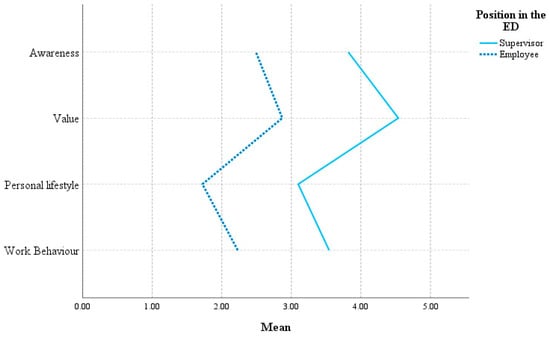Journal Description
Healthcare
Healthcare
is an international, scientific, peer-reviewed, open access journal on health care systems, industry, technology, policy, and regulation, and is published semimonthly online by MDPI. Ocular Wellness & Nutrition Society (OWNS) is affiliated with Healthcare and the members receive a discount on article processing charges.
- Open Access— free for readers, with article processing charges (APC) paid by authors or their institutions.
- High Visibility: indexed within Scopus, SCIE and SSCI (Web of Science), PubMed, PMC, and other databases.
- Journal Rank: JCR - Q2 (Health Policy & Services ) / CiteScore - Q2 (Leadership and Management)
- Rapid Publication: manuscripts are peer-reviewed and a first decision is provided to authors approximately 21.7 days after submission; acceptance to publication is undertaken in 2.6 days (median values for papers published in this journal in the first half of 2023).
- Recognition of Reviewers: reviewers who provide timely, thorough peer-review reports receive vouchers entitling them to a discount on the APC of their next publication in any MDPI journal, in appreciation of the work done.
Impact Factor:
2.8 (2022);
5-Year Impact Factor:
3.0 (2022)
Latest Articles
Violence Prevention Climate and Health-Oriented Leadership in German Emergency Departments
Healthcare 2023, 11(16), 2234; https://doi.org/10.3390/healthcare11162234 - 08 Aug 2023
Abstract
Emergency departments (EDs) are high-risk environments for workplace violence. Research into techniques to prevent violence has less frequently explored the influence of leadership. This study aims to analyze the association of leadership with the prevention of violence using the concepts of health-oriented leadership
[...] Read more.
Emergency departments (EDs) are high-risk environments for workplace violence. Research into techniques to prevent violence has less frequently explored the influence of leadership. This study aims to analyze the association of leadership with the prevention of violence using the concepts of health-oriented leadership (HoL) and the violence prevention climate (VPC). This quantitative cross-sectional study was conducted through online surveys between November 2021 and March 2022 across Germany. A sample of 370 doctors and nurses working in German EDs were recruited. Perceptions towards VPC and HoL were compared between groups divided according to profession and position using independent t-tests or Mann–Whitney U tests. Separate multiple linear regression models for supervisors and employees analyzed the association between different profiles of HoL with VPC. Supervisors and employees showed significant differences in supervisor staff-care and VPC. Regression analysis demonstrated that supervisors’ self-care and employees’ assessment of supervisor’s staff-care positively predicted all dimensions of VPC. This empirical study provides insights into the variable perceptions of different groups and the association of leadership profiles with the perceptivity of VPC. The results of this study can be used to emphasize the importance of HoL training for both employees and supervisors to improve communication and health-promoting behavior.
Full article
(This article belongs to the Special Issue Occupational Health and Safety in the Healthcare Sector - Second Edition)
►
Show Figures
Open AccessArticle
A Potential Indicator for Assessing Patient Blood Management Standard Implementation
by
, , , , , , , , and
Healthcare 2023, 11(16), 2233; https://doi.org/10.3390/healthcare11162233 - 08 Aug 2023
Abstract
(1) Background: Patient blood management (PBM) program as a multidisciplinary practice and a standard of care for the anemic surgical patient has an increasingly important role in reducing transfusions and optimizing both clinical outcomes and costs. Documented success of PBM implementation is not
[...] Read more.
(1) Background: Patient blood management (PBM) program as a multidisciplinary practice and a standard of care for the anemic surgical patient has an increasingly important role in reducing transfusions and optimizing both clinical outcomes and costs. Documented success of PBM implementation is not sufficient for implementation of recommendations and correct use at hospital level. The primary objective of our study was to define a composite patient blood management process safety index—Safety Index in PBM (SIPBM)—that measures the impact of screening and treating anemic patients on the efficiency and effectiveness of the patient care process undergoing elective surgery. (2) Methods: We conducted a retrospective comparative study in a tertiary hospital by collecting data and analyzing the Safety Index in PBM (SIPBM) in patients undergoing major elective surgical procedures. (3) Results: The percentage of patients from the total of 354 patients (178 in 2019 and 176 in 2022) included in the study who benefited from preoperative iron treatment increased in 2022 compared to 2019 from 27.40% to 36.71%. The median value of the SIPBM was 1.00 in both periods analyzed, although there is a significant difference between the two periods (p < 0.005), in favor of 2022. (4) Conclusions: Measuring the effectiveness of PBM implementation and providing ongoing feedback through the Safety Index in PBM (SIPBM) increases the degree to which opportunities to improve the PBM process are identified. The study represents a first step for future actions and baselines to develop tools to measure the safety and impact of the patient blood management process in the surgical field.
Full article
(This article belongs to the Section Healthcare Quality and Patient Safety)
Open AccessEditorial
Detection and Prevention of Mild Cognitive Impairment and Dementia
Healthcare 2023, 11(16), 2232; https://doi.org/10.3390/healthcare11162232 - 08 Aug 2023
Abstract
Mild cognitive impairment (MCI) is characterized by cognitive deficits alongside essentially preserved competence in activities of daily living [...]
Full article
(This article belongs to the Special Issue Detection and Prevention of Mild Cognitive Impairment and Dementia)
Open AccessArticle
Convolutional Neural Networks to Assess Steno-Occlusive Disease Using Cerebrovascular Reactivity
by
, , , , , , , , and
Healthcare 2023, 11(16), 2231; https://doi.org/10.3390/healthcare11162231 - 08 Aug 2023
Abstract
Cerebrovascular Reactivity (CVR) is a provocative test used with Blood oxygenation level-dependent (BOLD) Magnetic Resonance Imaging (MRI) studies, where a vasoactive stimulus is applied and the corresponding changes in the cerebral blood flow (CBF) are measured. The most common clinical application is the
[...] Read more.
Cerebrovascular Reactivity (CVR) is a provocative test used with Blood oxygenation level-dependent (BOLD) Magnetic Resonance Imaging (MRI) studies, where a vasoactive stimulus is applied and the corresponding changes in the cerebral blood flow (CBF) are measured. The most common clinical application is the assessment of cerebral perfusion insufficiency in patients with steno-occlusive disease (SOD). Globally, millions of people suffer from cerebrovascular diseases, and SOD is the most common cause of ischemic stroke. Therefore, CVR analyses can play a vital role in early diagnosis and guiding clinical treatment. This study develops a convolutional neural network (CNN)-based clinical decision support system to facilitate the screening of SOD patients by discriminating between healthy and unhealthy CVR maps. The networks were trained on a confidential CVR dataset with two classes: 68 healthy control subjects, and 163 SOD patients. This original dataset was distributed in a ratio of 80%-10%-10% for training, validation, and testing, respectively, and image augmentations were applied to the training and validation sets. Additionally, some popular pre-trained networks were imported and customized for the objective classification task to conduct transfer learning experiments. Results indicate that a customized CNN with a double-stacked convolution layer architecture produces the best results, consistent with expert clinical readings.
Full article
(This article belongs to the Special Issue Artificial Intelligence Applications in Medicine)
►▼
Show Figures

Figure 1
Open AccessArticle
Establishing a Centralized Virtual Visit Support Team: Early Insights
by
, , , , , , and
Healthcare 2023, 11(16), 2230; https://doi.org/10.3390/healthcare11162230 - 08 Aug 2023
Abstract
Background: With the removal of many barriers to direct-to-consumer telehealth during the COVID-19 pandemic, which resulted in a historic surge in the adoption of telehealth into ongoing practice, health systems must now identify the most efficient and effective way to sustain these visits.
[...] Read more.
Background: With the removal of many barriers to direct-to-consumer telehealth during the COVID-19 pandemic, which resulted in a historic surge in the adoption of telehealth into ongoing practice, health systems must now identify the most efficient and effective way to sustain these visits. The Medical University of South Carolina Center for Telehealth developed a Telehealth Centralized Support team as part of a strategy to mature the support infrastructure for the continued large-scale use of outpatient virtual care. The team was deployed as the Center for Telehealth rolled out a new ambulatory telehealth software platform to monitor clinical activity, support patient registration and virtual rooming, and ensure successful visit completion. Methods: A multi-method, program-evaluation approach was used to describe the development and composition of the Telehealth Centralized Support Team in its first 18 months utilizing the Reach, Effectiveness, Adoption, Implementation, Maintenance framework. Results: In the first 18 months of the Telehealth Centralized Support team, over 75,000 visits were scheduled, with over 1500 providers serving over 46,000 unique patients. The team was successfully deployed over a large part of the clinical enterprise and has been well received across the health system. It has proven to be a scalable model to support enterprise-level virtual health care delivery. Conclusions: While further research is needed to evaluate the long-term program outcomes, the results of its early implementation suggest great promise for improved telehealth patient and provider satisfaction, the more equitable delivery of virtual services, and more cost-effective means for supporting virtual care.
Full article
(This article belongs to the Special Issue Healthcare in Digital Environments: An Interdisciplinary Perspective)
►▼
Show Figures
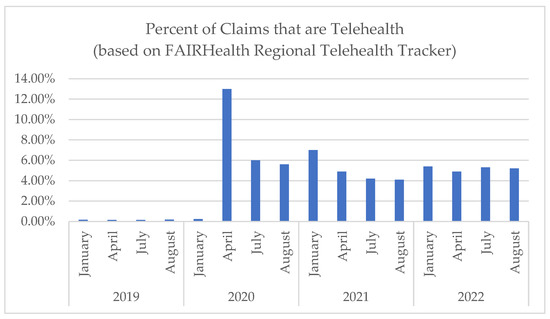
Figure 1
Open AccessArticle
Feedback for Emergency Ambulance Staff: A National Review of Current Practice Informed by Realist Evaluation Methodology
Healthcare 2023, 11(16), 2229; https://doi.org/10.3390/healthcare11162229 - 08 Aug 2023
Abstract
Research suggests that feedback in Emergency Medical Services (EMS) positively affects quality of care and professional development. However, the mechanisms by which feedback achieves its effects still need to be better understood across healthcare settings. This study aimed to understand how United Kingdom
[...] Read more.
Research suggests that feedback in Emergency Medical Services (EMS) positively affects quality of care and professional development. However, the mechanisms by which feedback achieves its effects still need to be better understood across healthcare settings. This study aimed to understand how United Kingdom (UK) ambulance services provide feedback for EMS professionals and develop a programme theory of how feedback works within EMS, using a mixed-methods, realist evaluation framework. A national cross-sectional survey was conducted to identify feedback initiatives in UK ambulance services, followed by four in-depth case studies involving qualitative interviews and documentary analysis. We used qualitative content analysis and descriptive statistics to analyse survey responses from 40 prehospital feedback initiatives, alongside retroductive analysis of 17 interviews and six documents from case study sites. Feedback initiatives mainly provided individual patient outcome feedback through “pull” initiatives triggered by staff requests. Challenges related to information governance were identified. Our programme theory of feedback to EMS professionals encompassed context (healthcare professional and organisational characteristics), mechanisms (feedback and implementation characteristics, psychological reasoning) and outcomes (implementation, staff and service outcomes). This study suggests that most UK ambulance services use a range of feedback initiatives and provides 24 empirically based testable hypotheses for future research.
Full article
(This article belongs to the Special Issue Quality of Pre-hospital Care)
►▼
Show Figures
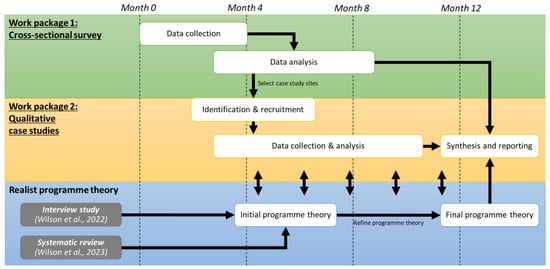
Figure 1
Open AccessArticle
Classification of Color Fundus Photographs Using Fusion Extracted Features and Customized CNN Models
by
, , , , , , , , , and
Healthcare 2023, 11(15), 2228; https://doi.org/10.3390/healthcare11152228 - 07 Aug 2023
Abstract
►▼
Show Figures
This study focuses on overcoming challenges in classifying eye diseases using color fundus photographs by leveraging deep learning techniques, aiming to enhance early detection and diagnosis accuracy. We utilized a dataset of 6392 color fundus photographs across eight disease categories, which was later
[...] Read more.
This study focuses on overcoming challenges in classifying eye diseases using color fundus photographs by leveraging deep learning techniques, aiming to enhance early detection and diagnosis accuracy. We utilized a dataset of 6392 color fundus photographs across eight disease categories, which was later augmented to 17,766 images. Five well-known convolutional neural networks (CNNs)—efficientnetb0, mobilenetv2, shufflenet, resnet50, and resnet101—and a custom-built CNN were integrated and trained on this dataset. Image sizes were standardized, and model performance was evaluated via accuracy, Kappa coefficient, and precision metrics. Shufflenet and efficientnetb0demonstrated strong performances, while our custom 17-layer CNN outperformed all with an accuracy of 0.930 and a Kappa coefficient of 0.920. Furthermore, we found that the fusion of image features with classical machine learning classifiers increased the performance, with Logistic Regression showcasing the best results. Our study highlights the potential of AI and deep learning models in accurately classifying eye diseases and demonstrates the efficacy of custom-built models and the fusion of deep learning and classical methods. Future work should focus on validating these methods across larger datasets and assessing their real-world applicability.
Full article

Figure 1
Open AccessArticle
Ultrasound Imaging of Subtalar Joint Instability for Chronic Ankle Instability
Healthcare 2023, 11(15), 2227; https://doi.org/10.3390/healthcare11152227 - 07 Aug 2023
Abstract
►▼
Show Figures
The purpose of this study was to develop the assessment of subtalar joint instability with chronic ankle instability (CAI) using ultrasonography. Forty-six patients with anterior talofibular ligament (ATFL) abnormalities and a history of ankle sprain were divided into CAI (21.2 ± 5.9 y/o,
[...] Read more.
The purpose of this study was to develop the assessment of subtalar joint instability with chronic ankle instability (CAI) using ultrasonography. Forty-six patients with anterior talofibular ligament (ATFL) abnormalities and a history of ankle sprain were divided into CAI (21.2 ± 5.9 y/o, 7 males and 17 females) and asymptomatic groups (21.0 ± 7.4 y/o, 9 males and 12 females) on the basis of subjective ankle instability assessed using the CAIT and the Ankle Instability Instrument Tool (AIIT). Twenty-six age-matched feet participated in a control group (18.9 ± 7.0 y/o, 9 males and 17 females). Ultrasound measurements of the width of the posterior subtalar joint facet were obtained at rest and maximum ankle inversion (subtalar joint excursion; STJE). The differences in STJE among the three groups were assessed by one-way ANOVA. The relationship between STJE and subjective ankle instability was assessed using Spearman’s correlation tests. The STJE value was significantly greater in the CAI group (2.3 ± 0.8 mm) than in the asymptomatic (1.0 ±0.4 mm) and control groups (0.8 ±0.2 mm) (p < 0.001, effect size: 0.64). STJE had significant negative correlations with CAIT (r = −0.71, p < 0.01), and significant positive correlations with AIIT (r = 0.74, p < 0.01). The cut-off value to distinguish between the CAI and asymptomatic groups was 1.7 mm using the ROC curve.
Full article

Figure 1
Open AccessArticle
Clinical Efficiency and Acceptability of EMDR and MOSAIC Therapy for PTSD
Healthcare 2023, 11(15), 2226; https://doi.org/10.3390/healthcare11152226 - 07 Aug 2023
Abstract
Eye movement desensitization and reprocessing (EMDR) therapy is one of the therapies recommended by the World Health Organization (2013) to treat posttraumatic stress disorder (PTSD). Although efficient, repeated exposure to the traumatic memory may reduce its acceptability to patients. The therapy “eye movement
[...] Read more.
Eye movement desensitization and reprocessing (EMDR) therapy is one of the therapies recommended by the World Health Organization (2013) to treat posttraumatic stress disorder (PTSD). Although efficient, repeated exposure to the traumatic memory may reduce its acceptability to patients. The therapy “eye movement and alternate stimulation for brain integration” (MOSAIC in French) was developed to improve acceptability and reduce pain by drawing on the patient’s internal resources. MOSAIC therapy focuses on the body sensations that the patient wants to experience and avoids having to relive the traumatic memories. This observational study aimed to compare the clinical efficiency of EMDR and MOSAIC therapy for PTSD and to measure the well-being generated by both therapies. Twenty-six PTSD patients (17 females and 9 males, mean age 37.01 years, SD = 13.06) received treatment by psychiatrists and/or psychologists trained with EMDR or MOSAIC therapy. Both patient groups achieved a significant decrease in PTSD symptoms as measured with the PCL-5. However, fewer sessions were required with the MOSAIC therapy than with EMDR therapy. As expected, the level of well-being experienced by the patient during the therapy, assessed using the Lickert scale, was higher with MOSAIC than with EMDR therapy from the first session. These findings provide the first evidence of the efficacy of MOSAIC therapy treatment, which now needs to be corroborated in a larger randomized clinical trial.
Full article
(This article belongs to the Special Issue Innovative Treatments for Post-traumatic Stress Disorder (PTSD))
►▼
Show Figures
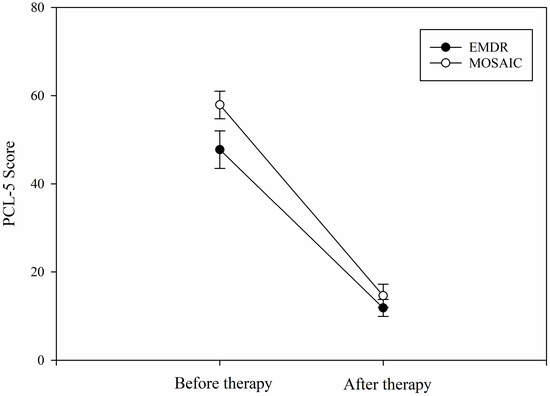
Figure 1
Open AccessSystematic Review
Assistive Technology Involving Postural Control and Gait Performance for Adults with Stroke: A Systematic Review and Meta-Analysis
by
and
Healthcare 2023, 11(15), 2225; https://doi.org/10.3390/healthcare11152225 - 07 Aug 2023
Abstract
►▼
Show Figures
This study aimed to comprehensively summarize assistive technology devices for postural control and gait performance in stroke patients. In the study, we searched for randomized controlled trials (RCTs) published until 31 December 2022 in four electrical databases. The most frequently applied assistive technology
[...] Read more.
This study aimed to comprehensively summarize assistive technology devices for postural control and gait performance in stroke patients. In the study, we searched for randomized controlled trials (RCTs) published until 31 December 2022 in four electrical databases. The most frequently applied assistive technology devices involving postural stability and gait function for stroke patients were robot-assistive technology devices. Out of 1065 initially retrieved citations that met the inclusion criteria, 30 RCTs (12 studies for subacute patients and 18 studies for chronic patients) were included in this review based on eligibility criteria. The meta-analysis included ten RCTs (five studies for subacute patients and five for chronic patients) based on the inclusion criteria of the data analysis. After analyzing, the variables, only two parameters, the Berg balance scale (BBS) and the functional ambulation category (FAC), which had relevant data from at least three studies measuring postural control and gait function, were selected for the meta-analysis. The meta-analysis revealed significant differences in the experimental group compared to the control group for BBS in both subacute and chronic stroke patients and for the FAC in chronic stroke patients. Robot-assistive training was found to be superior to regular therapy in improving postural stability for subacute and chronic stroke patients but not gait function. This review suggests that robot-assistive technology devices should be considered in rehabilitative approaches for postural stability and gait function for subacute and chronic stroke patients.
Full article
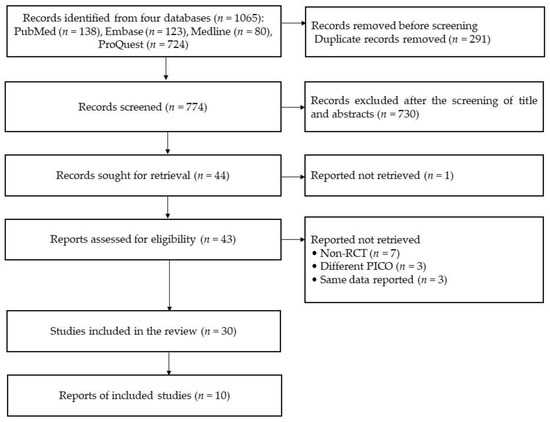
Figure 1
Open AccessArticle
Characterizing Social Determinants of Maternal and Child Health: A Qualitative Community Health Needs Assessment in Underserved Areas
by
, , , , , , and
Healthcare 2023, 11(15), 2224; https://doi.org/10.3390/healthcare11152224 - 07 Aug 2023
Abstract
This study aimed to identify social determinants of maternal and child health (SDoH) in Pakistan. Using a qualitative study design, data were collected from community members in seven underserved areas of Lahore City, Pakistan. A total of 22 qualitative in-depth interviews and 10
[...] Read more.
This study aimed to identify social determinants of maternal and child health (SDoH) in Pakistan. Using a qualitative study design, data were collected from community members in seven underserved areas of Lahore City, Pakistan. A total of 22 qualitative in-depth interviews and 10 focus group discussions (FGDs) were conducted. The participants included basic health unit healthcare staff, women of reproductive ages, male family members, mothers-in-law, and religious leaders. We found that maternal and child health is adversely affected by the following socioeconomic and environmental barriers: (i) poor housing quality and sanitation; (ii) inadequate food supply and safety; (iii) unsatisfactory public sector school services; (iv) a lack of safety and security; (v) scarce poverty alleviation efforts and loan schemes; (vi) unsatisfactory transport and internet services; and (vii) inadequate health services. The targets for maternal and child health in Pakistan cannot be met without close coordination between the primary health sector, local governance, and macro state structures, which collectively must monitor and improve housing adequacy, food security, public sector services (primary healthcare services, public schooling, public transport, and public internet access), overall safety, and poverty emergence.
Full article
(This article belongs to the Special Issue Maternal and Child Health and Healthcare)
Open AccessArticle
Quality Assessment and Modulating Factors on Self-Regulatory Behavior in Peer-Assisted Medical Learning
Healthcare 2023, 11(15), 2223; https://doi.org/10.3390/healthcare11152223 - 07 Aug 2023
Abstract
Objectives: Standardized extracurricular skills labs courses have been developed in recent decades and are important approaches in peer-assisted medical learning (PAL). To provide high quality training and achieve effective learning strategies, continuous evaluations and quality assessments are essential. This research aims to evaluate
[...] Read more.
Objectives: Standardized extracurricular skills labs courses have been developed in recent decades and are important approaches in peer-assisted medical learning (PAL). To provide high quality training and achieve effective learning strategies, continuous evaluations and quality assessments are essential. This research aims to evaluate quality data from medical students participating in extracurricular skills labs courses at Ruhr-University Bochum to prospectively optimize concepts and didactical training and standardize processes. Additionally, we set out to assess and quantify drivers that are influencing factors of the self-reflection of competencies. Methods: The analysis was based on a routine assessment of n = 503 attendees of the PAL courses in the skills labs in three consecutive semesters, who voluntarily participated in the evaluation. We analyzed the effects of age, semester and their interaction on the self-reflection of competencies in technical skills courses using moderated regression and simple slope analyses, as previously published. A univariate analysis of variance (ANOVA) with post hoc Tukey HSD testing was used to analyze group means in estimated competencies using IBM SPSS Statistics V.28. Results: An analysis of variance revealed a significant increase in self-assessed competencies when comparing pre- vs. post-course evaluation data in all 35 depicted items (all p < 0.001). A total of 65.5% of the items were adjusted significantly differently, revealing modified self-reflected pre-course levels compared to those stated before. A moderated regression analysis revealed that age (R2 = 0.001, F(1;2347) = 1.88, p < 0.665), semester of study (∆R2 = 0.001, ∆F (1;2346) = 0.012, p < 0.912) and their interaction (∆R2 = 0.001, ∆F (1;2345) = 10.72, p < 0.227) did not explain a significant amount of the variance in self-reflection variance. A simple slope analysis of earlier (b = 0.07, t = 0.29, p < 0.773) and later semesters of study (b = 0.06, t = 0.07, p < 0.941) did not differentiate from zero. Conclusions: The presented evaluation paradigm proved to be a useful tool to encourage students to initiate self-regulatory and self-reflective behavior. The cohesive evaluation of the large cohort of attendees in extracurricular, facultative skills labs courses was helpful in terms of quality assessments and future adaptations. Further evaluation paradigms should be implemented to assess other influencing factors, such as gender, on self-reflection, since age and semester did not explain significant differences in the model.
Full article
(This article belongs to the Special Issue Feedback in Medical Education and Clinical Practice: What’s Next?)
►▼
Show Figures

Figure 1
Open AccessArticle
Clinicians’ and Advanced Cancer Patients’ Estimates of Treatment Efficacy and Toxicity in Oncologic Treatment
by
, , , , , , , , and
Healthcare 2023, 11(15), 2222; https://doi.org/10.3390/healthcare11152222 - 07 Aug 2023
Abstract
The purpose of the study was to compare curability expectations between clinicians and patients and examine the influence of sociodemographic and clinical variables on these expectations and satisfaction within the clinician-patient relationship. This prospective study, conducted from February 2020 to May 2023, involved
[...] Read more.
The purpose of the study was to compare curability expectations between clinicians and patients and examine the influence of sociodemographic and clinical variables on these expectations and satisfaction within the clinician-patient relationship. This prospective study, conducted from February 2020 to May 2023, involved 986 advanced cancer patients. The patients completed questionnaires assessing treatment efficacy and toxicity predictions and the Scale to Assess the Therapeutic Relationship (STAR). Seventy-four percent of advanced cancer patients had an inaccurate perception of treatment curability. Clinicians perceived male patients with lung or digestive cancer without adenocarcinoma at locally advanced stages, with fewer comorbidities and better functional status (ECOG), as having higher curability expectations. Clinicians tended to have more realistic expectations than patients, since they had to consider the presence of treatment’s side effects, while patients underestimated the possibility of experiencing these adverse effects. Patients who had more favorable expectations regarding survival and quality of life were found to be more satisfied with the care provided by their oncologists. It is crucial for patients to understand the treatment goals and establish realistic expectations in order to actively participate in decision-making and achieve a better quality of life at the end of life.
Full article
(This article belongs to the Special Issue Quality and Patient Safety in Palliative Care)
Open AccessArticle
Can High-Fidelity Patient Simulation Be Used for Skill Development in Junior Undergraduate Students: A Quasi-Experimental Study
Healthcare 2023, 11(15), 2221; https://doi.org/10.3390/healthcare11152221 - 07 Aug 2023
Abstract
High-fidelity patient simulation (HFPS) is widely used in professional training to enhance students’ competence in clinical management. A guideline for HFPS provides a systematic approach to direct students to learning during the simulation process. Problem-solving (PS) and clinical reasoning (CR) skills are essential
[...] Read more.
High-fidelity patient simulation (HFPS) is widely used in professional training to enhance students’ competence in clinical management. A guideline for HFPS provides a systematic approach to direct students to learning during the simulation process. Problem-solving (PS) and clinical reasoning (CR) skills are essential to developing students’ professional competence in safe and effective care. These two skills should be initiated in the early training. A structured guideline was developed for HFPS. This study aimed to investigate the effects of the structured HFPS guideline on the development of PS and CR skills in junior nursing students. The students were required to go through four sessions, pre-briefing, simulation design, facilitation, and debriefing, for the HFPS; the study utilized the Problem-Solving Inventory (PSI) and the Nurses’ Clinical Reasoning Scale (NCRS) to measure PS and CR abilities before and after HFPS. Bivariate analysis, a one-sample t-test, and an independent t-test were performed to evaluate the performance of the PS and CR skills during the two study periods. A total of 189 students were recruited, with 92 in the intervention group and 97 in the control group. The research assistant was responsible for student recruitment through email invitations and allocating the students into the control group or the intervention group. A Wilcoxon analysis was performed and revealed significant differences in PS and CR between the two groups (p < 0.001). The analytic results showed that the PSI, particularly in domains of Problem-Solving Confidence (PSC) (p < 0.001) and overall PS (p < 0.001), and the CR (p < 0.001) had significant improvement after HFPS, particularly in the intervention group. The study concluded that the structured HFPS guideline significantly improved the students’ problem-solving and clinical reasoning abilities. Nurse educators play an important role in providing explicit learning instructions in a simulation guideline that directs and guides students to learn at each stage of HFPS. The students can be directed to be engaged in their learning through HFPS to enhance their competence in knowledge and skill development (PS and CR) for their personal and professional development.
Full article
(This article belongs to the Special Issue Nursing Contributions to Improve Healthcare Outcomes)
►▼
Show Figures
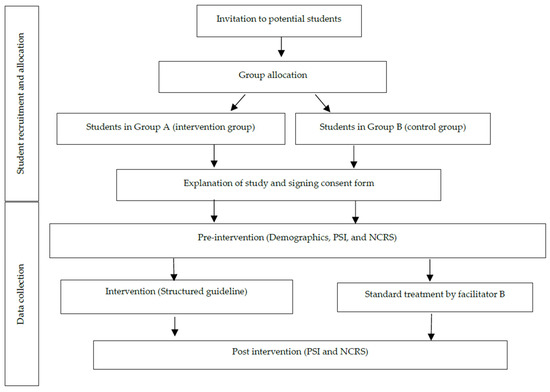
Figure 1
Open AccessSystematic Review
The Global Prevalence and Associated Factors of Burnout among Emergency Department Healthcare Workers and the Impact of the COVID-19 Pandemic: A Systematic Review and Meta-Analysis
Healthcare 2023, 11(15), 2220; https://doi.org/10.3390/healthcare11152220 - 07 Aug 2023
Abstract
Background/Aim: Emergency medicine (EM) settings are very stressful, given the high workload, intense working environment, and prolonged working time. In turn, the rate of burnout and its three domains have been increasingly reported among healthcare workers (HCWs). Therefore, we conducted this meta-analysis to
[...] Read more.
Background/Aim: Emergency medicine (EM) settings are very stressful, given the high workload, intense working environment, and prolonged working time. In turn, the rate of burnout and its three domains have been increasingly reported among healthcare workers (HCWs). Therefore, we conducted this meta-analysis to determine the prevalence and risk factors of burnout among EM HCWs. Methods: Six databases were searched in February 2023, yielding 29 articles (16,619 EM HCWs) reporting burnout or its three domains (emotional exhaustion “EE”, depersonalization “DP”, and personal accomplishment “PA”). The primary outcome was the prevalence of burnout and its domains, while secondary outcomes included the risk factors of high burnout, EE, DP, or low PA. Burnout rates were pooled across studies using STATA software. The prevalence was measured using the pooled effect size (ES), and the random-effects model was used when heterogeneity was encountered; otherwise, the fixed-effects model was used. Results: The prevalence of overall burnout was high (43%), with 35% of EM HCWs having a high risk of burnout. Meanwhile, 39%, 43%, and 36% of EM workers reported having high levels of EE and DP and low levels of PA, respectively. Country-specific changes in the rate of burnout were observed. The rate of high burnout, high EE, high DP, and low PA was higher during the COVID-19 pandemic as compared to the pre-pandemic period. The type of profession (nurses, physicians, residents, etc.) played a significant role in modifying the rate of burnout and its domains. However, gender was not a significant determinant of high burnout or its domains among EM workers. Conclusions: Burnout is a prevalent problem in emergency medicine practice, affecting all workers. As residents progress through their training years, their likelihood of experiencing burnout intensifies. Nurses are most affected by this problem, followed by physicians. Country-associated differences in burnout and its domains are evident.
Full article
(This article belongs to the Special Issue Current and Future Challenges in Public Health and Disaster Preparedness)
►▼
Show Figures

Figure 1
Open AccessArticle
Baseline Profiles of Drug Prescriptions Prior to Diagnosis of Mild Cognitive Impairment (MCI) Obtained by Latent Class Analysis (LCA), and Assessment of Their Association with Conversion to Dementia
by
, , , and
Healthcare 2023, 11(15), 2219; https://doi.org/10.3390/healthcare11152219 - 07 Aug 2023
Abstract
Polypharmacy has been linked to cognitive decline. However, interventions targeting modifiable risk factors, some of which are targets of the most commonly used drugs, could reduce the prevalence of dementia. Our aim was to determine the drug prescription regimen at baseline, prior to
[...] Read more.
Polypharmacy has been linked to cognitive decline. However, interventions targeting modifiable risk factors, some of which are targets of the most commonly used drugs, could reduce the prevalence of dementia. Our aim was to determine the drug prescription regimen at baseline, prior to the diagnosis of mild cognitive impairment (MCI), and its possible association with progression to dementia. Data were collected from the electronic medical records of 342 MCI outpatients diagnosed during 2006–2017 at their first neurology consultation. We followed the classical three-step method of statistical analysis, starting with a Latent Class Analysis (LCA) to discover subgroups of drug prescription probability. Half of the patients were under polypharmacy (≥5 drugs), 17.5% had no recorded medication, 33.3% progressed to dementia (94.7% in ≤5 years), and 84.1% of them to Alzheimer’s disease (AD). According to the LCA and based on 20 therapeutic indicators obtained from 240 substances and regrouped according the Anatomical Therapeutic Chemical Classification, we identified a four-profile model: (1) low (35.7% of patients); (2) mixed (28.7%); (3) cardio-metabolic (19.3%); and (4) psychotropic (16.4%). The binomial regression logistic model showed that profiles 2 and 3 (and 4 for AD), with a higher drug prescription conditioned probability against classic risk factors, were protective than profile 1 (OR = 0.421, p = 0.004; OR = 0.278, p = 0.000; OR = 0.457, p = 0.040, respectively), despite polypharmacy being significant in profiles 2 and 3 (mean > 7 drugs) vs. profile 1 (1.4 ± 1.6) (p = 0.000). Patients in the latter group were not significantly older, although being aged 65–79 years old quadrupled (OR = 4.217, p = 000) and being >79 tripled (OR = 2.945, p = 0.010) the conversion risk compared to patients <65 years old. According to the proposed analytical model, profiling the heterogeneous association of risk factors, which were taken prior to diagnosis, could be explored as an indicator of prior care and a predictor of conversion to dementia.
Full article
(This article belongs to the Section Chronic Care)
►▼
Show Figures

Figure A1
Open AccessArticle
Effects of Social Networks on Job Performance of Individuals among the Hypertension Management Teams in Rural China
Healthcare 2023, 11(15), 2218; https://doi.org/10.3390/healthcare11152218 - 07 Aug 2023
Abstract
►▼
Show Figures
Background: Limited studies have explored the relationship among cross-organizational and multidisciplinary medical staff. Aim: The present study conducted an in-depth examination and validation of the influence of complex cross-organization and multidisciplinary social networks on the job performance of team members. Method: Multi-level hierarchical
[...] Read more.
Background: Limited studies have explored the relationship among cross-organizational and multidisciplinary medical staff. Aim: The present study conducted an in-depth examination and validation of the influence of complex cross-organization and multidisciplinary social networks on the job performance of team members. Method: Multi-level hierarchical regression analysis was used to assess the impact of the centrality and the characteristics of structural holes in social networks (i.e., advice network, information network, friendship network, and trust network) on job performance. Results: The in-closeness centrality of the advice network (β = 0.176, p < 0.05) and the betweenness centrality of the trust network (β = 0.126, p < 0.05) had positive effects on task performance. The in-closeness centrality of the advice network (β = 0.226, p < 0.05; β = 0.213, p < 0.05) and the CI (1 − constraint index) of the friendship network (β = 0.130, p < 0.05; β = 0.132, p < 0.05) had positive effects on contextual performance and overall job performance. Meanwhile, the out-closeness centrality of the information network (β = −0.368, p < 0.01; β = −0.334, p < 0.05) had a negative effect on contextual performance and overall job performance. Conclusions: This study investigates the relationship between healthcare professionals’ job performance and their social networks, taking into account the perspectives of cross-organizational and multidisciplinary teams. The study contributes to the effort of breaking down barriers between different disciplines and organizations, and ultimately, improving the quality of healthcare delivery.
Full article

Figure 1
Open AccessArticle
Towards Cultural Adequacy of Experience-Based Design: A Qualitative Evaluation of Community-Integrated Intermediary Care to Enhance the Family-Based Long-Term Care for Thai Older Adults
by
, , , , , , and
Healthcare 2023, 11(15), 2217; https://doi.org/10.3390/healthcare11152217 - 07 Aug 2023
Abstract
In this qualitative study, we provided an in-depth understanding of how Community-Integrated Intermediary Care (CIIC), a new service model for family-based long-term care (LTC), was perceived by its users. The CIIC, established in Chiang Mai, Northern Thailand, consisted of three main interventions: (1)
[...] Read more.
In this qualitative study, we provided an in-depth understanding of how Community-Integrated Intermediary Care (CIIC), a new service model for family-based long-term care (LTC), was perceived by its users. The CIIC, established in Chiang Mai, Northern Thailand, consisted of three main interventions: (1) A temporary respite care center; (2) A family-centered care capacity building; (3) Functional training delivered as community group exercise and home exercise to improve healthy ageing for independent older adults. Ten pairs of dependent Thai older adults, their primary family caregivers, and ten village health volunteers were recruited using the purposive sampling method. Data were collected via semistructured in-depth interviews. A thematic descriptive qualitative analysis was used for data analysis. The findings revealed that CIIC helped reduce the burden of family caregivers by providing respite, relief, and care coordination. The experiences of the CIIC users indicated possibilities for service redesign, development, and delivery strategies to better meet the LTC needs of older adults and family caregivers. Following the local stakeholders’ commitment and local community health volunteers’ network, a well-integrated formal and informal care CIIC model can be implied as an effective and sustainable ageing care service model in Thailand and other Asian countries in the future.
Full article
(This article belongs to the Special Issue Healthcare Strategies for Patients with Chronic Diseases in an Ageing Society)
►▼
Show Figures
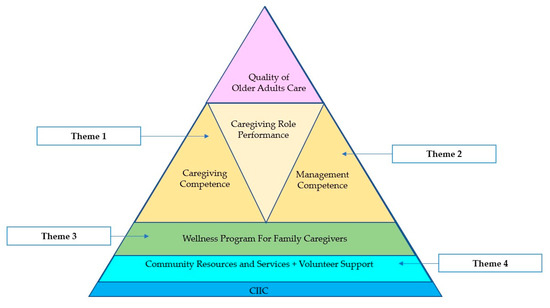
Figure 1
Open AccessArticle
The Road to Developing Standard Time for Efficient Nursing Care: A Time and Motion Analysis
by
, , , , , , , , , , , and
Healthcare 2023, 11(15), 2216; https://doi.org/10.3390/healthcare11152216 - 06 Aug 2023
Abstract
(1) Background: The amount of time nurses spend with their patients is essential to improving the quality of patient care. Studies have shown that nurses spend a considerable amount of time on a variety of activities––which are often not taken into account while
[...] Read more.
(1) Background: The amount of time nurses spend with their patients is essential to improving the quality of patient care. Studies have shown that nurses spend a considerable amount of time on a variety of activities––which are often not taken into account while estimating nurse-to-patient care time allocation––that could potentially be eliminated, combined or delegated with greater productivity. The current study aimed to calculate standard time for each activity category by quantifying the amount of time required by nurses to complete an activity category and determine the adjustment time that can be given during work, as well as determine factors that can be altered to improve the efficiency of nursing care on inpatient general wards of a governmental hospital. (2) Method: A time and motion study was conducted over two weeks using 1-to-1 continuous observations of nurses as they performed their duties on inpatient general wards, while observers recorded each single activity, and specifically the time and movements required to complete those activities. (3) Result: There was 5100 min of observations over 10 working days. Nurses spent 69% (330 min) of time during their 8 h morning shift on direct patient care, (19.4%) ward/room activities (18%), documentation (14%), indirect patient care (12%) and professional communication (5%). Around 94 min of activities seem to be wasted and can be potentially detrimental to nurses’ overall productivity and threaten patient care quality. The standard number of hours that represents the best estimate of a general ward nurse regarding the optimal speed at which the staff nurse can provide care related activities was computed and proposed. (4) Conclusions: The findings obtained from time–motion studies can help in developing more efficient and productive nursing work for more optimal care of patients.
Full article
(This article belongs to the Section Healthcare Quality and Patient Safety)
►▼
Show Figures

Figure 1
Open AccessReview
The Quiet Epidemic: An Overview of Emerging Qualitative Research Trends on Sedentary Behavior in Aging Populations
by
and
Healthcare 2023, 11(15), 2215; https://doi.org/10.3390/healthcare11152215 - 06 Aug 2023
Abstract
Sedentary behavior poses a significant health risk to older adults. The purpose of this scoping review is to summarize key findings from qualitative research (since 2012), with a focus on explaining prevailing research trends and patterns within the field. This review included 25
[...] Read more.
Sedentary behavior poses a significant health risk to older adults. The purpose of this scoping review is to summarize key findings from qualitative research (since 2012), with a focus on explaining prevailing research trends and patterns within the field. This review included 25 studies that met the strict inclusion criteria. Five key research themes have emerged: (1) defining and shaping perspectives of sedentary behavior, (2) understanding the dynamics of daily routines and contexts, (3) raising awareness of older adults’ perceived advantages and disadvantages of sedentary behavior, (4) identifying its determinants and discouraging factors, and (5) exploring interventions to promote active behaviors and reduce sedentary behavior. These themes highlight the multifaceted nature of SB and underscore the importance of tailoring interventions to address individual, social, and environmental issues. A comprehensive understanding of SB is critical to developing effective strategies to promote active lifestyles and reduce SB in older adults. Further qualitative research is needed to deepen our understanding and develop targeted interventions and strategies.
Full article
(This article belongs to the Special Issue Interventions for Sedentary Behavior and Physical Activity in the Ageing Population)
►▼
Show Figures

Figure 1

Journal Menu
► ▼ Journal Menu-
- Healthcare Home
- Aims & Scope
- Editorial Board
- Reviewer Board
- Topical Advisory Panel
- Instructions for Authors
- Special Issues
- Topics
- Sections & Collections
- Article Processing Charge
- Indexing & Archiving
- Editor’s Choice Articles
- Most Cited & Viewed
- Journal Statistics
- Journal History
- Journal Awards
- Society Collaborations
- Conferences
- Editorial Office
- 10th Anniversary of Healthcare
Journal Browser
► ▼ Journal BrowserHighly Accessed Articles
Latest Books
E-Mail Alert
News
Topics
Topic in
Applied Sciences, Electronics, Healthcare, JSAN, Sensors
Intelligent Health Monitoring and Assistance Systems and Frameworks
Topic Editors: Ismaeel Al Ridhawi, Ali KarimeDeadline: 20 August 2023
Topic in
Behavioral Sciences, Education Sciences, Healthcare, IJERPH
The Causes, Counseling and Prevention Strategies for Maladaptive and Deviant Behaviors in Schools
Topic Editors: Jian-Hong Ye, Mei-Yen Chen, Yu-Feng WuDeadline: 31 August 2023
Topic in
Cancers, Diseases, Geriatrics, Healthcare, Women
Women's Health and Aging
Topic Editors: Li Yang, Rosa Legood, Fei MaDeadline: 25 September 2023
Topic in
BioMedInformatics, Cancers, Current Oncology, Diagnostics, Healthcare
Real-Time Monitoring for Improving Cancer Diagnosis and Prognosis
Topic Editors: Maria Li Lung, Josephine KoDeadline: 19 October 2023

Conferences
Special Issues
Special Issue in
Healthcare
Periodontal Diseases and Oral Health
Guest Editors: Iwona Olszewska-Czyz, Jelena Prpić, Renata GórskaDeadline: 15 August 2023
Special Issue in
Healthcare
Symptoms and Experiences of Patients after Intensive Care
Guest Editors: Takeshi Unoki, Hideaki SakuramotoDeadline: 1 September 2023
Special Issue in
Healthcare
Ethical, Legal and Forensic Issues regarding Vulnerable Populations
Guest Editors: Stavroula Papadodima, Flora BacopoulouDeadline: 19 September 2023
Special Issue in
Healthcare
Narrative in Health and Social Care
Guest Editor: Covelli VenusiaDeadline: 30 September 2023
Topical Collections
Topical Collection in
Healthcare
Mindfulness in Healthcare
Collection Editors: Helen Noble, Ian Walsh
Topical Collection in
Healthcare
Healthcare Strategy and Community Care
Collection Editors: Munjae Lee, Kyu-sung Lee
Topical Collection in
Healthcare
Clinical Simulation in Health Sciences
Collection Editors: César Leal-Costa, José Luis Díaz Agea
Topical Collection in
Healthcare
E-learning and Digital Training in Healthcare Education: Current Trends and New Challenges
Collection Editors: Luís Proença, José João Mendes, João Botelho, Vanessa Machado







